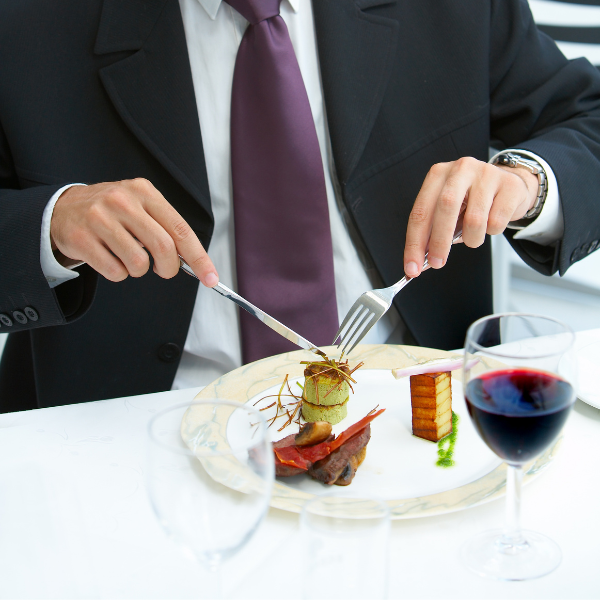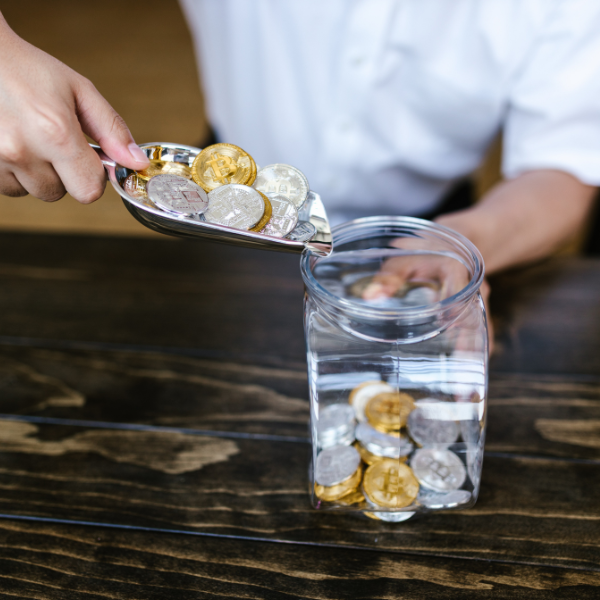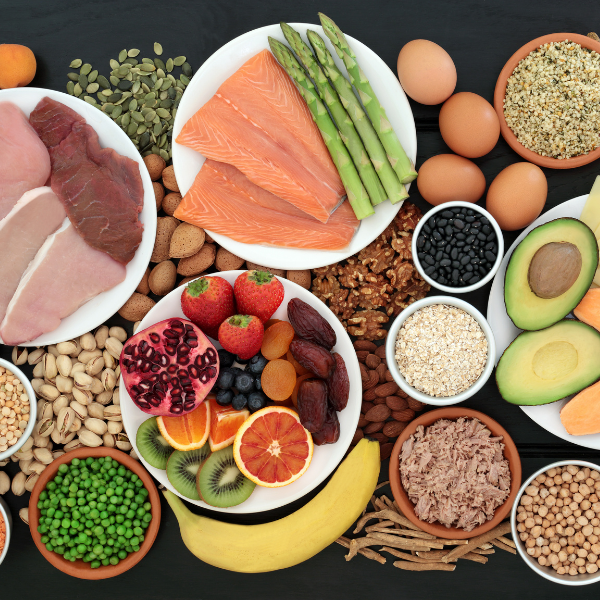Whether it's hearts for Valentine’s Day or gingerbread men for the holidays, themed cookies always liven up a dessert table. Cookie cutters are simple to use and offer a fun way to make traditional cookies exciting. In this in-depth article, we provide you with everything you need to know about using cookie cutters.
What Are Cookie Cutters?
Cookie cutters are used to cut and mold cookie dough into specific shapes. Cookie cutters come in a variety of shapes and sizes to coincide with holidays, special events, or just everyday use. The great thing about cookie cutters is that they are easy to use, allowing you to effortlessly elevate your cookie-making skills and dessert presentations. 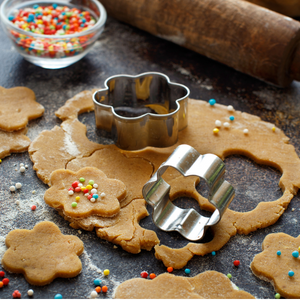
What Material Is Best For Cookie Cutters?
There is no definitive answer on which cookie cutters are the best to use when forming cookies. However, there is one that may fit your specific needs best. Here are some things to know about each type of cookie cutter so you can choose the one that works for you:
Aluminum Cookie Cutters
- Affordable
- Easy to use
- Lose shape easily
Copper Cookie Cutters
- Durable
- Easily cut intricate designs
- Difficult to remove dough from detailed spots
Stainless Steel Cookie Cutters
- Durable
- Maintain their shape
- Tend to rust
Plastic Cookie Cutters
- Affordable
- Easy to use
- Great for kids
- Don’t have a precise cut
Should I Use A Cookie Cutter Before Or After Baking?
Forming cookies before putting them in the oven is the most common practice. Many shape their cookies before baking to ensure cookies come out properly shaped and to make the most of their dough.
However, it’s not impossible to use cookie cutters after baking. If you do choose to use your cookie cutters after baking, be sure not to let cookies cool off too much after taking them out of the oven. The ideal amount of time to shape them is 10-15 minutes after they come out of the oven. Below is a list of the pros and cons of using cookie cutters after baking:
Pros
- Allows you to spend less time prepping and forming your dough prior to baking
- Can use leftover baked cookie pieces for milkshake garnishes or to make cookie balls
Cons
- When forming baked cookies, you are not able to use leftover dough scraps to make additional batches
- If cookies harden too much, you won’t be able to form them correctly
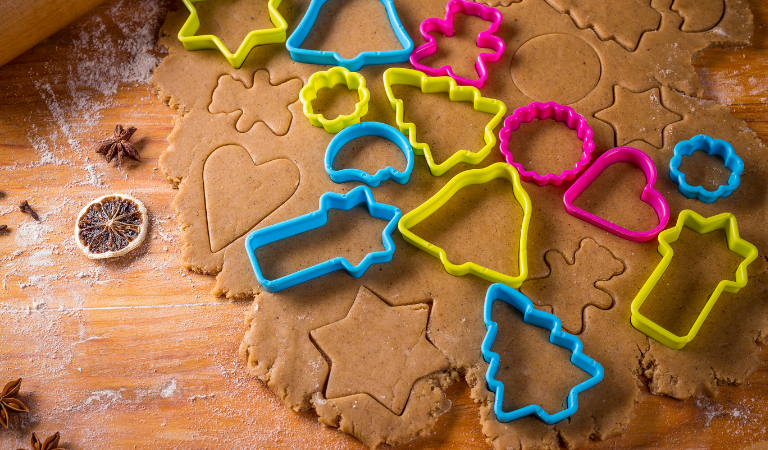
How To Use Cookie Cutters
Making specialty cookies can be challenging because they tend to lose their shape. To ensure you consistently create intricately-shaped desserts, below is a step-by-step guide on how to properly use cookie cutters:
- Step 1: First thing’s first: get your dough! You can use any cookie dough recipe you choose. But for best results, use one for soft cookies rather than crunchy ones.
- Step 2: Flour your work surface to roll out your dough. You can roll your dough on a floured countertop or floured parchment paper. Be sure to also lightly dust your rolling pin.
- Tip: If you choose to work on your countertop, be sure to sanitize the area before and after.
- Step 3: Place your dough onto your floured work surface and lightly sprinkle some flour on top of the dough. Begin to slowly knead the dough until it forms into a ball.
- Step 4: Once your dough is in the shape of a ball, you can slowly begin rolling it out with your rolling pin. Go slowly until your dough is in one even layer, somewhere between 1/4 inch to 1/8 inch thick.
- Tip: You can use spacer bands that attach to the end of your rolling pin to ensure the dough is evenly distributed. You can also place an extra sheet of parchment paper over the dough with two wooden rulers on either side of the dough; the rulers are about 1/8 inch thick.
- Step 5: Once your dough is even, you can cut it. Begin cutting from the outside, moving inward to maximize the amount of dough used per batch. Create shapes close together to make the most of your dough. Dust the cookie cutter with flour in between each cookie.
- Tip: Leave a small plate or bowl at your station with a pile of flour to dip into between each cut.
-
Step 6: After you’ve made as many shapes as possible with the dough, gently move the scraps away from the shapes and knead them into a ball.
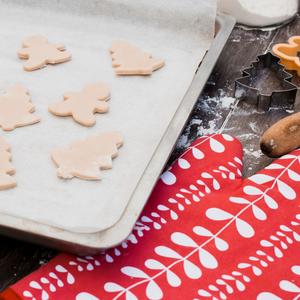
- Step 7: Carefully pick up each shape with a spatula and gently set it down on a baking sheet lined with parchment paper. Make sure cookies are slightly separated on the pan.
- Tip: Using an offset spatula can help you pick up the cookie with one hand while gently supporting the bottom of the cookie with your other hand.
- Step 8: Place the baking sheet into the refrigerator to chill your dough. Chilling your dough helps avoid spreading while baking, so refrigerate your dough for at least 30 minutes. While your dough is chilling, this is a good time to preheat your oven!
- Step 9: Once the dough has chilled, bake your cookies according to your recipe. As your cookies are baking, you can repeat the rolling and cutting process with the ball of dough you formed from the scraps.
- Step 10: When your cookies are done baking, take them out of the oven and let them cool for a few minutes. Remove them from the baking sheet and transfer them to a wire rack so they can finish cooling. This keeps the cookies from continuing to bake on the hot sheet.
- Step 11: Repeat the baking and cooling process with your second batch of cookies. If you’re using the same baking sheet, be sure to let it cool completely to prevent the second batch to from spreading.
-
Step 12: Once all your cookies have cooled down, feel free to frost and decorate your cookies however you’d like!

Cookie Cutter FAQ
What Can You Cut With A Cookie Cutter?
Cookie cutters are most commonly used for shaping cookies. But, you can also use them to create fun shapes when making pancakes or for arts and crafts. Get as creative as you’d like; just be sure to thoroughly clean your cookie cutter before using it for cookies again.
How Do You Keep Cookie Cutter Cookies From Spreading?
It’s all in the dough! If your dough is too soft, it will likely spread when baking and could ruin the shapes you created. To prevent your cookies from spreading, be sure to:
- Avoid over kneading
- Evenly roll out the dough
- Chill your dough in the refrigerator or freezer
Can You Use Cookie Cutters On Premade Cookie Dough?
You can use cookie cutters with prepackaged refrigerated dough, although the results may not be as precise as with homemade dough. Prepackaged dough can be too sticky for effectively forming shapes.
Should I Spray Cookie Cutters?
There’s no need to spray cookie cutters with cooking spray. Simply coat your cookie molds with flour in between molding each cookie to prevent the dough from sticking.
Can You Put Cookie Cutters In The Oven?
You should not put cookie cutters in the oven, no matter which material the cutter is. Metal can get too hot and plastic can melt. 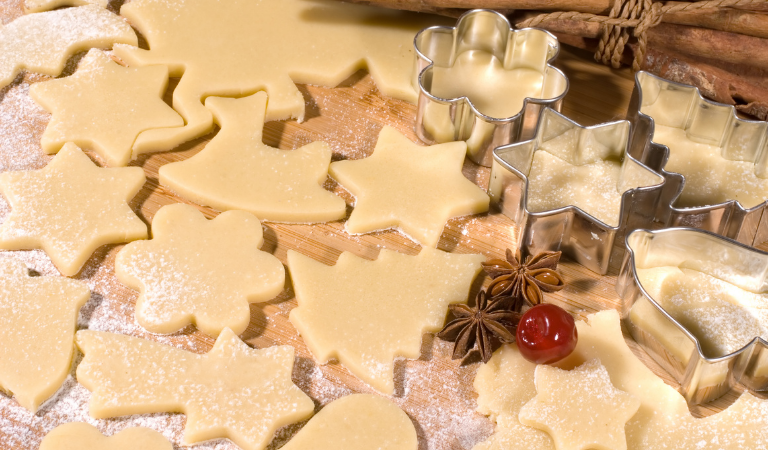
Time To Enjoy Your Cookies
Now that you understand how to use a cookie cutter, it’s time to make specialty cookies. Just remember to chill your dough for at least 30 minutes and flour your cookie cutter between each cookie. And of course, make them your own and have fun!
Creative Ways to Use Cookie Cutters Beyond Baking
Cookie cutter shapes can be used as stencils when painting, drawing pictures, or even when cutting out shapes from paper or felt fabric. If you’re feeling particularly crafty, you can glue together different pieces of construction paper into 3-D shapes that resemble your favorite animals or characters.
Cookie cutters also have other uses in the kitchen. You can use them to cut out shapes of fruits and vegetables to make snacks or meals more fun for kids. Cookie-cutter-shaped sandwiches are especially popular with little ones, while adults can use them to create intricate appetizers and desserts for special events.


